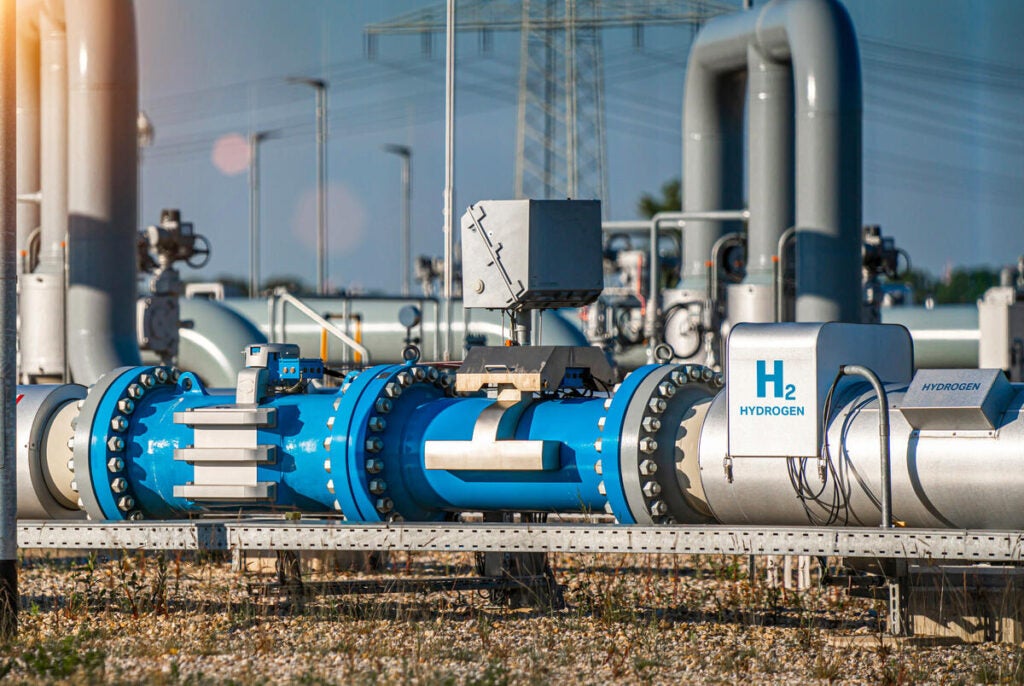By Morgan Rote
The Biden administration recently unveiled the long-awaited draft of its rules governing tens of billions of dollars’ worth of tax incentives that will greatly influence America’s nascent hydrogen economy and the extent to which the emerging industry delivers promised climate benefits.
The new draft rules — prompted by the 2022 Inflation Reduction Act and known as 45V — outline what qualifies as clean, allowing companies to unlock valuable tax credits as they look to develop new hydrogen projects over the coming decade, with the potential to greatly benefit the climate and communities for the longer term.
Because hydrogen can be produced in many ways, resulting in a range of climate impacts, the rules must be consistent with the latest science on the specific hydrogen production pathways being proposed and incentivized. And while the proposed rules should be applauded in several key areas, they miss two major opportunities to establish the climate protections needed for a beneficial hydrogen production build out in the U.S.
By not accurately addressing methane emissions associated with production of hydrogen from natural gas (blue hydrogen) and not accounting for hydrogen emissions themselves (which have indirect warming effects in the atmosphere), we could end up exacerbating the very problem we are trying to solve with hydrogen.
45V: a visionary step in the right direction, but a need to check the blind spots
For green hydrogen, the proposed rules include the three core pillars of emissions accounting that EDF, environmental justice groups, consumer advocates and responsible industry members have called for. The electricity needed to produce green hydrogen must be 1) provided by new carbon-free sources of power; 2) delivered efficiently within the same region and 3) matched hourly with the hydrogen plant’s power consumption.
Without these three pillars, it is estimated that hydrogen produced from electricity could increase overall grid emissions by hundreds of millions of tons of carbon dioxide, while worsening local air pollution, increasing electricity prices and undercutting our clean energy goals. Therefore, including them in the final rule puts the U.S’s green hydrogen production on the right critical path.
But what about the blind spots? For hydrogen to be an effective climate solution, all climate warming emissions must be accounted for. Not just carbon dioxide, but also methane and even hydrogen itself.
Blind spot #1: Addressing methane emissions from blue hydrogen production
More than half of the Regional Clean Hydrogen Hubs recently announced by the U.S Department of Energy include blue hydrogen production. And EDF’s analysis of proposed and likely projects suggests more than two-thirds of new hydrogen capacity by 2035 will rely on natural gas. This makes methane emissions related to hydrogen production a potentially fatal blind spot for the climate. If the final 45V rules fail to get the accounting right, upstream emissions could cancel out a large portion of the positive climate benefit we need from hydrogen.
One of the biggest factors determining the climate impact of blue hydrogen is how much methane leaks upstream during extraction and transport of the gas feedstock. Studies by EDF have found that high rates of methane leakage, coupled with hydrogen leakage, can make developing fossil-based hydrogen worse for the climate in the near-term than direct use of natural gas.
Unfortunately, the administration has left the door open to blue hydrogen — relying on both fossil- and bio-based methane — receiving artificially high tax credit values. The current tool the U.S. government uses to calculate this climate impact is badly outdated, vastly underestimating true methane leakage rates and overall impact. This translates to essentially giving a free pass to produce blue hydrogen that does not support U.S. climate goals, and may even take us backwards. The final 45V rule must be revised to minimize this risk and kick-start a science-based, joint-agency process to update methane assumptions and methodologies.
Blind spot #2: Accounting for hydrogen emissions
Regardless of how hydrogen is produced (whether it is green, blue or other), hydrogen itself is not inherently climate neutral. It is an indirect greenhouse gas, with more than 35 times the warming power of CO2 in the first twenty years.
It is also prone to leak — and too often, large volumes of hydrogen are intentionally vented or purged. The administration wisely clarified that such wasted hydrogen is ineligible for the credit. But the final rule needs to go even further.
Like the direct greenhouse gases, hydrogen should be accounted for in the climate impact calculations that determine the tax credit value. And to prove they aren’t claiming the credit for wasted hydrogen, producers should have to certify that they have effective hydrogen emissions management plans in place.
Following the intent of the Inflation Reduction Act means making hydrogen producers responsible for addressing their full scope of climate-warming emissions. This includes the methane and hydrogen blind spots flagged here, as well as other potential pitfalls — such as weak accounting practices for renewable natural gas.
The U.S has an opportunity with its final 45V rule to build out a successful hydrogen economy that will benefit climate and communities in the long run. Furthermore, these rules could inspire other countries and regions around the world as they look to build their own hydrogen economies. The proposed rules make tremendous progress, but the remaining omissions are well worth fighting for.








